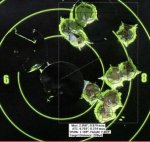In the for what its worth category I just took my rifle to the range after receiving my suppressor to obtain some initial zero information and I thought I'd share.
Rifle:
Remington 700P LTR
.308 Caliber
19.75" Fluted Barrel Threaded 5/8x24
Ammo:
New (never fired) Lapua Brass
175 grain Sierra Match King
44.5 grains of Varget
CCI Large Rifle Primer
2.80" COAL
Velocity results of 3 rounds over an Oehler 35P gave an average of 2539 fps. Using this velocity has been close but using the Applied Ballistics trajectory calibration gives me a better fit using 2616.55 fps.
Primary Zero was obtained using a Holland Radial Muzzle Brake.
With brake removed and thread protector installed zero is <b>-0.5mil</b> (Impacts are 1.8" high at 100 yards with my zero).
with suppressor installed zero is <b>+1.1mil</b> (Impacts are 3.96" low at 100 yards with my zero)
All three configurations held well sub MOA and there was no horizontal component to the POI shifts.
I use applied ballistics for Android and enter these as three separate "bullets" with each having different zero heights at 100 yards. I shoot most with the brake installed and thus that is what I use as my scope adjusted zero. Thankfully my S&B scope allows me 5 clicks down from my zero before the zero stop and that puts my non-brake zero right on the stop.
Anyway its not like much of this information can be directly used by anyone but I hope that some one at least finds it interesting or a point of reference for comparison. If anyone is using it for comparison please share your numbers so that I may get the same comparison experience.
Thanks
~Brett
Rifle:
Remington 700P LTR
.308 Caliber
19.75" Fluted Barrel Threaded 5/8x24
Ammo:
New (never fired) Lapua Brass
175 grain Sierra Match King
44.5 grains of Varget
CCI Large Rifle Primer
2.80" COAL
Velocity results of 3 rounds over an Oehler 35P gave an average of 2539 fps. Using this velocity has been close but using the Applied Ballistics trajectory calibration gives me a better fit using 2616.55 fps.
Primary Zero was obtained using a Holland Radial Muzzle Brake.
With brake removed and thread protector installed zero is <b>-0.5mil</b> (Impacts are 1.8" high at 100 yards with my zero).
with suppressor installed zero is <b>+1.1mil</b> (Impacts are 3.96" low at 100 yards with my zero)
All three configurations held well sub MOA and there was no horizontal component to the POI shifts.
I use applied ballistics for Android and enter these as three separate "bullets" with each having different zero heights at 100 yards. I shoot most with the brake installed and thus that is what I use as my scope adjusted zero. Thankfully my S&B scope allows me 5 clicks down from my zero before the zero stop and that puts my non-brake zero right on the stop.
Anyway its not like much of this information can be directly used by anyone but I hope that some one at least finds it interesting or a point of reference for comparison. If anyone is using it for comparison please share your numbers so that I may get the same comparison experience.
Thanks
~Brett
Last edited:










